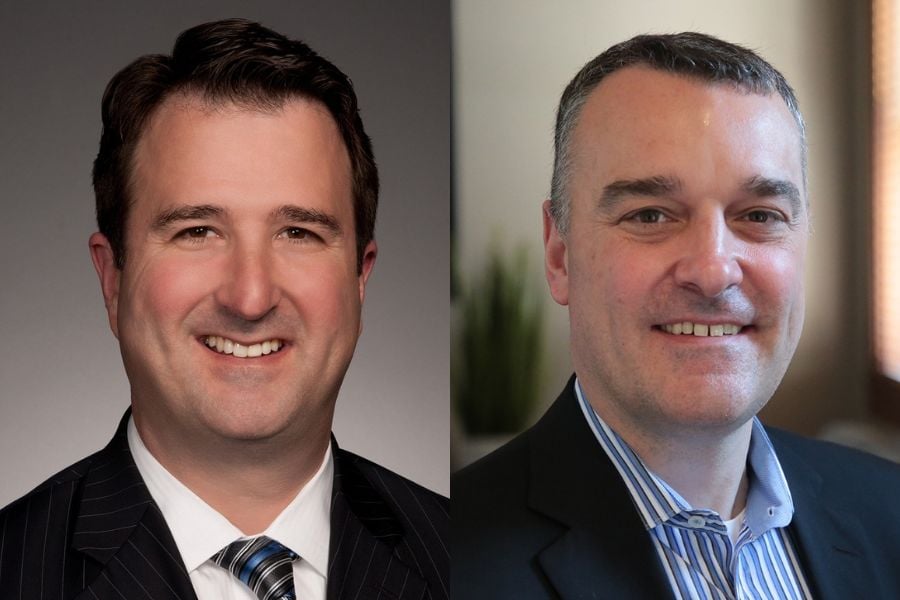

As the retirement landscape continues to evolve along with the subsequent plan offerings made available to advisors and investors alike, large players in the retirement space are adding retirement income solutions to their platforms.
Investment fees continue to decline, and an increasing number of Americans lack access to guaranteed income solutions. As a result, this is putting pressure on asset managers to chase alternative income streams and offer lower-cost solutions. Advisors, arguably more than ever, must constantly review fee structures.
John Faustino, head of retirement products at Broadridge Financial Solutions, believes product providers have been facing ongoing fee compression for years.
He says the recent commercial efforts around launching new retirement income solutions can be viewed as “the retirement market adapting to address recently highlighted decumulation needs of plan participants.”
“These innovative offerings generally provide plan participants with lower-cost annuity benefits than they'd be able to purchase out of plan, while also providing the retirement plan solution providers with an alternative income source,” he says.
Additionally, fee compression provides potential opportunities for providers to differentiate and increase distribution in addition to adding to their margin.
“There's less fee compression happening on the insurance side than on the investment side,” he noted. “When these insurance offerings are made available within a 401(k) plan versus being individually sold in general, the fees are less. But then there's an opportunity for these firms to make up for it with distribution.”
This dynamic is driving increased interest in insurance-based retirement income solutions, such as annuities, which can provide a level of guaranteed income for retirees. Faustino notes that these products may offer an opportunity for providers to differentiate themselves and potentially offset the impact of fee compression.
As far as qualified retirement plans go, Jim Wessels, partner and financial advisor at Vision Financial, says fee compression means the retirement landscape has become “more cost competitive,” pointing to the 401(k) space, which “is a fraction of what it used to cost.”
“We have better technology, and you've had consolidation of the record keepers to where there's more scale that allows them to offer more for less,” he says.
Wessels also acknowledges that the industry hasn’t really focused on fee compression, recalling in the past that most accounts that were in the quarter million to $1 million range were paying roughly a 1 percent asset management fee.
Meanwhile, advisors who are gathering assets are providing “a heck of a lot more in service than what you saw 20 years ago when they were collecting that fee,” says Wessels.
Now, he says, clients are still paying the 1 percent fee along with the expectation of getting a comprehensive and detailed financial plan, that includes estate planning and tax planning, and examining the risk management that goes with it.
Chuck Failla, CEO of Sovereign Financial, says while the industry has certainly seen a "tremendous" amount of fee compression, it's also becoming more critical for advisors to deliver value.
"You could justify higher fees, but you got to be delivering value for that," he says. One of the ways advisors can tap into their value proposition is by offering a pooled employer plan (PEP).
"It was designed to essentially make it easier and more efficient for companies to get their 401(k)s at a lower cost point," he explains. "Basically, you could pull in multiple different employers into one larger plan, and they benefit with fee and cost reductions.
"Where the PEP comes into play is it brings some of those administrative costs down lower. You'd be charging a lower fee, but theoretically, you should be able to manage more business because of these more efficient constructs," Failla added.
Faustino cautions that as these solutions become more widely available within 401(k) plans, the fees associated with them are likely to become more competitive as well. This underscores the importance of advisors conducting thorough due diligence to identify the most suitable options for their clients.
“If you think about insurance models in general, many of them are about risk pooling. If you can get more individuals to sign up for these solutions, you can offer them at a lower rate, and then those that survive end up getting the benefits,” says Faustino.
Ultimately, Faustino believes that the solutions offered as default investment options within retirement plans are likely to be the most successful, as individual participants often don't engage as actively as one might hope, even with education and guidance.
"I think any of the solutions that are offered as a default are going to be the winners," he says.

Relationships are key to our business but advisors are often slow to engage in specific activities designed to foster them.

Whichever path you go down, act now while you're still in control.

Pro-bitcoin professionals, however, say the cryptocurrency has ushered in change.

“LPL has evolved significantly over the last decade and still wants to scale up,” says one industry executive.

Survey findings from the Nationwide Retirement Institute offers pearls of planning wisdom from 60- to 65-year-olds, as well as insights into concerns.
Streamline your outreach with Aidentified's AI-driven solutions
This season’s market volatility: Positioning for rate relief, income growth and the AI rebound
